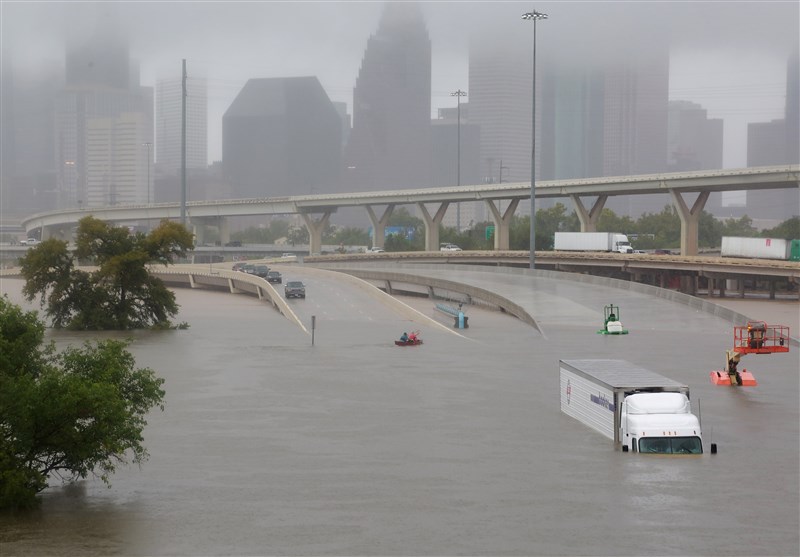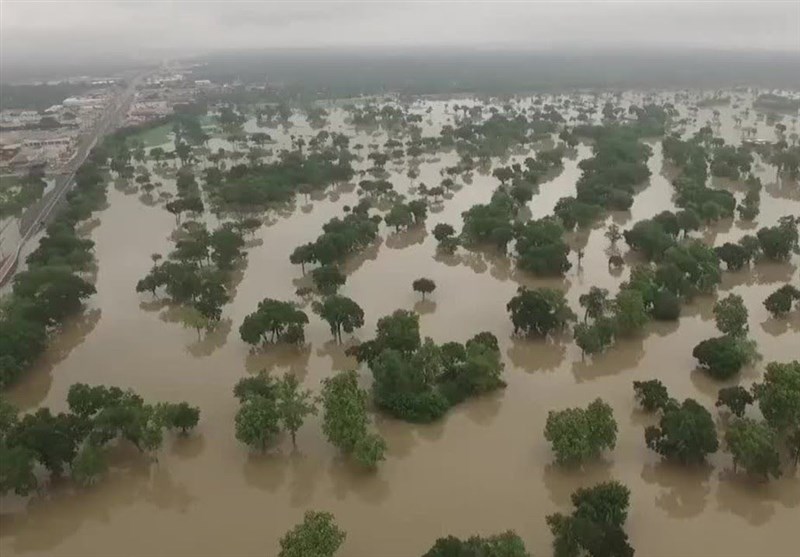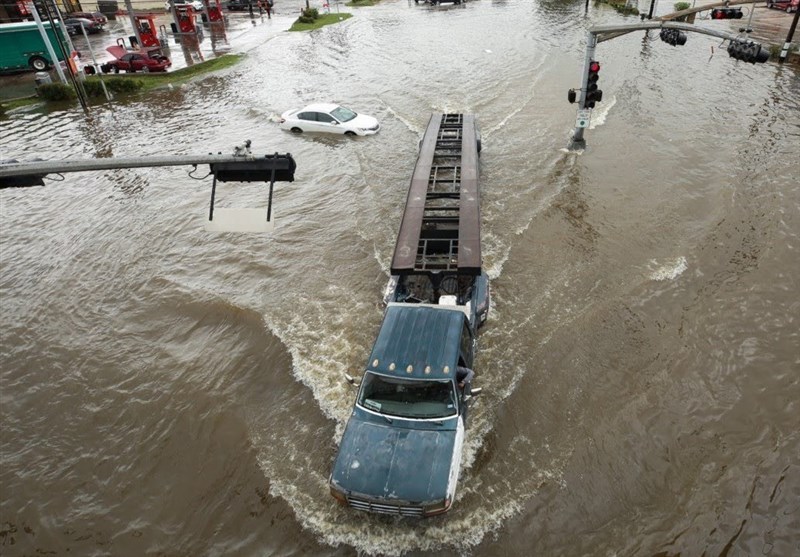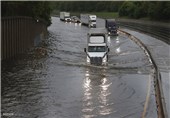Harvey Death Toll Reaches 9 as Flooding Continues
TEHRAN (Tasnim) - The remnants of Hurricane Harvey pelted Texas on Monday as forecasters warned that the soaking rains would continue for days and major flooding would spread to neighboring states.
Texas officials said that at least nine people had died statewide as a result of the storm, as floodwaters continued to turn streets into waterways and gush into buildings Monday, a full two days after Harvey made landfall. Authorities expect the death toll to rise as rescue efforts go on and as more rain, rising rivers and surging floodwaters pummel the Gulf Coast.
President Trump late Monday pledged swift action by the federal government to provide relief to states affected by Harvey, and he is scheduled to visit Texas on Tuesday, The Washington Post reported.
“Recovery will be a long and difficult road, and the federal government stands ready, willing and able to assist in that effort,” he said during a joint news conference with Finnish President Sauli Niinisto.
First responders and good Samaritans took to boats to rescue stranded residents, with authorities warning that more than 30,000 people across the region could be forced from their homes by the time skies are expected to clear later this week.
“We are not out of the woods yet,” Elaine Duke, the acting Homeland Security secretary, said during a Monday briefing in Washington. “Harvey is still a dangerous and historic storm.”
Fears also grew beyond Texas, with particular concern centering on flood-prone Louisiana, where forecasts have called for as much as two feet of rainfall in some areas. Trump on Monday declared “emergency conditions” in Louisiana, evoking memories of Hurricane Katrina in 2005.
As if to underscore those fears, the US Army Corps of Engineers early Monday began releasing water from two Houston dams to relieve pressure from the downpour, which has deposited as much rain in a few days as the region averages in an entire year. Most of the damage in New Orleans wrought by Katrina occurred when levees burst, allowing waters to inundate the city.
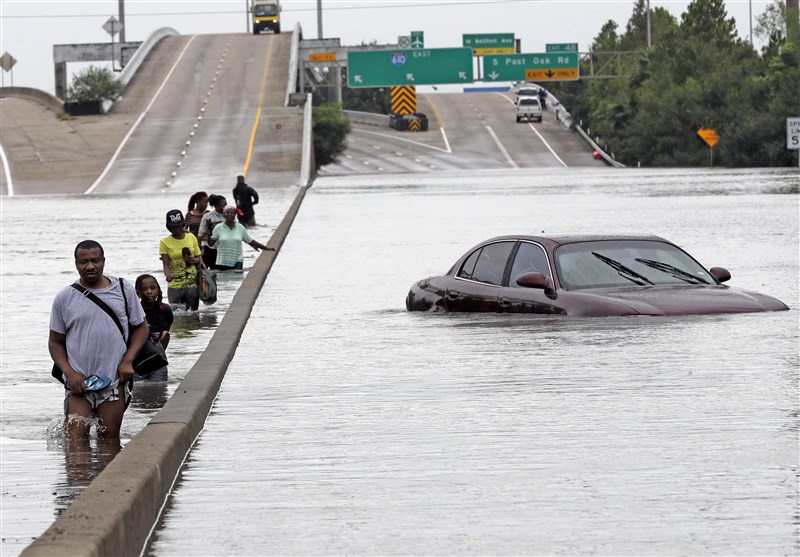
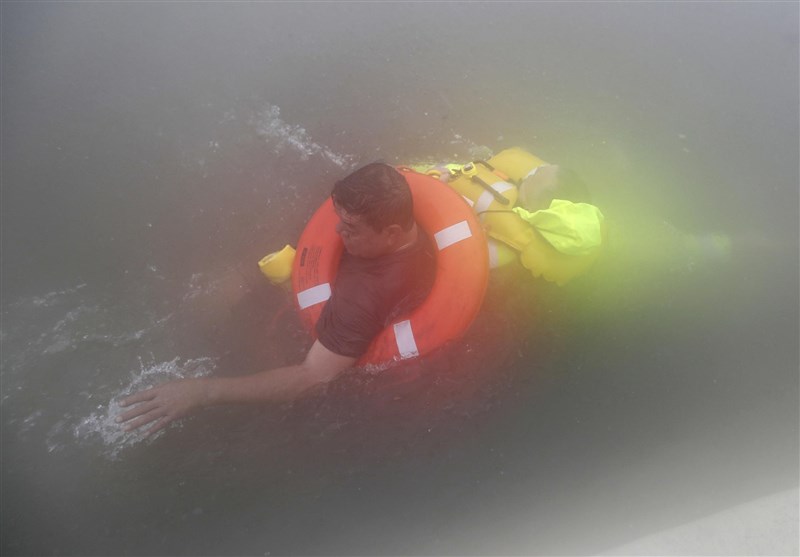
New Orleans is under a tornado and flash flood watch until Thursday, and the National Weather Service forecasts that the city could see five to 10 inches of rain in the next few days.
The immediate focus for many remained on Houston, the country’s fourth-largest city and a sprawling metropolitan area that has seen its share of floods. But the deluge of the past two days is unprecedented.
Every major waterway in the city spilled over its banks. Gullies overflowed. Even neighborhoods far from a creek or bayou flooded. The hardest-hit areas were in the south and southeast, the downstream end of the waterways.
But the southwest will be the next theater for catastrophe. The Brazos River, which runs through Fort Bend County about 20 miles west of downtown Houston, has been swelling as the runoff from the storm collects in its banks. National Weather Service models showed the river rising to 59 feet by Tuesday, topping the previous record of 54.7 feet.
Fort Bend County Judge John Hebert warned Monday night that more than a hundred square miles along the river could flood overnight and into Tuesday as the river swells to unprecedented heights.
“They can guarantee we’ll have a record flood in for Bend County,” he said. “In areas under mandatory evacuation, the danger is very real.”
Authorities issued mandatory and voluntary evacuation orders for parts of that area and warned that anyone who ignores mandatory evacuation orders will not be aided by first responders when the waters rise. But with virtually all the main thoroughfares already closed because of high water, many of the affected residents saw no way out.
Kim Adoubeif, 60, was among about a dozen residents of the Greatwood subdivision who stood in the rain atop a levee on the Brazos River on Monday to gaze at the water and ponder their fate. She said she checked online traffic maps and couldn’t find a route to safety.
“Every way out, there are roads that are flooded,” she said, holding an umbrella against the rain. “So we might not even find a way out.”
In the River Park subdivision, Byron Golden, 60, and his wife planned to stay put in their home. Other neighbors had tried to leave, only to meet flooded roads separating them from Interstate 10, a main artery out of town.
“We did plan an escape route, but at this time it may be too late to leave,” Golden said. He figured it would be better to get caught in a flood in his two-story house than in his car on the road.
Golden and his wife spent the day putting important documents and sentimental possessions into plastic bags and carrying their important things upstairs.
Some who did evacuate ran into difficulties Monday as they tried to reach shelters. In north Houston, for example, rescuers who picked up people forced out of their drenched homes brought them to a fire station to be transported to the M.O. Campbell Center, a school gym and activity center that had been converted to a shelter.
But when the shelter reached capacity, its doors were shut, and at least 300 people were stranded at the fire station.
The horror stories led authorities to urge patience and persistence on the part of residents needing help.
“Please don’t give up on us. None of us are going to give up,” Houston Police Chief Art Acevedo said at a news conference Monday.
One of the largest shelters, the George R. Brown Convention Center downtown, took in hundreds of evacuees Monday. Officials there said that people were lined up to take refuge and that Red Cross officials were prepared to accept 5,000 of them in total.
Among those helping with the rescue efforts alongside first responders were volunteers with boats. On Monday afternoon, dozens from both groups crowded near the Grand Vista subdivision on Harlem Road in the Brazos River area, on the edge of the water that stretched from the road to the rainy horizon.
Boats were unloading evacuees — among them the elderly and children — onto the road, then turning back into the flood.
“It messed me up seeing the kids and babies,” said Jorge Ramirez, 28, who brought over his Alumacraft flat-bottom boat after seeing on Facebook that folks were stuck in this neighborhood. “That’s who we’re trying to get out first.”
He said he’d made about five trips in four hours.
Authorities also faced new questions about whether they should have evacuated Houston. Asked Monday about the decision to recommend that people shelter in place rather than leave the city, Texas Gov. Greg Abbott said there was no point in thinking about past decisions.
“We are where we are now,” he said.
In a sign of the growing federal response, the Department of Homeland Security said late Monday that it was activating a “surge capacity force” that would allow non-Federal Emergency Management Agency employees across the department to deploy to the storm zone to assist with recovery missions.
Abbott, a Republican, praised the federal government’s response to the disaster.
National Guard units from across the country had readied cargo jets and Black Hawk helicopters to help with the response, the Pentagon said Monday. FEMA said federal agencies have more than 5,000 employees working in Texas.
Abbott also said that a crisis continued to unfold in Rockport, Aransas Pass and other coastal communities that took the brunt of Harvey when it spun into land as a Category 4 hurricane. Local media reported that rescue workers were continuing the hunt for missing residents.
Of those confirmed dead late Monday, six were in Harris County, which includes Houston; one was in Rockport, near where Harvey made landfall; and another person was discovered in La Marque, near Galveston. Police said a woman in her 60s died in Porter, a town north of Houston; she was napping in her bedroom when a large oak tree landed on her mobile home.
Somashekhar and Berman reported from Washington. Emily Wax-Thibodeaux in Katy, Tex.; Ed O’Keefe, Wesley Lowery, Thomas Gibbons-Neff and Katie Zezima in Washington; Brittney Martin in Houston; Ashley Cusick in New Orleans; and Mary Lee Grant in Corpus Christi, Tex., contributed to this report.

